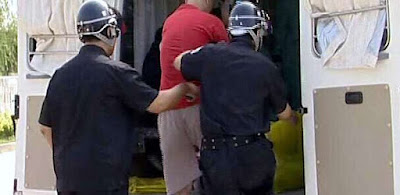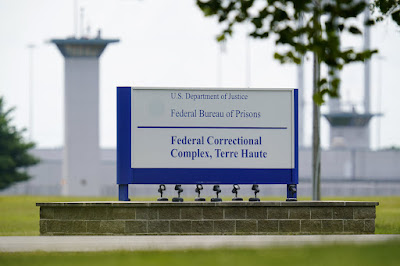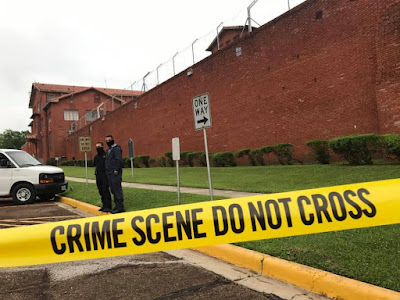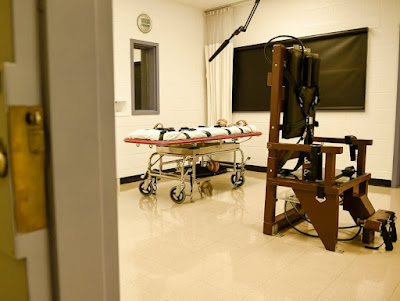 |
| William Barnhouse on the day he was released, March 8, 2017. |
(Indianapolis, IN – May 10, 2017) A judge today granted a motion by the Delaware County Prosecutor’s Office to dismiss the 1992 rape charges against William Barnhouse based on new DNA evidence proving Barnhouse’s innocence of the crime.
With Delaware County Prosecuting Attorney Jeffrey Arnold’s consent, the Innocence Project and the Wrongful Conviction Clinic at Indiana University McKinney persuaded a Delaware County court to reverse Barnhouse’s conviction on March 8, 2017 based on this new evidence.
Further proceedings in the case were scheduled for May. Arnold’s decision to dismiss the indictment against Barnhouse, who has dealt his entire life with serious mental health conditions, ends his 25 year struggle for justice.
“We’re thankful to the Delaware County Prosecutor’s Office for moving quickly to dismiss the charges against Mr. Barnhouse,” said Seema Saifee, a staff attorney with the Innocence Project, which is affiliated with Cardozo School of Law. “Mr. Barnhouse has waited a long time for this day. While no innocent person should have to endure a wrongful incarceration, prison can be especially devastating for someone like Mr. Barnhouse who is dealing with lifelong mental health conditions.”
Barnhouse said, “It was rough. I was always innocent. I’m glad it’s finally over. I feel so happy.”
In December 1992, Barnhouse was convicted of an April 21, 1992 rape that occurred behind a vacant building in Muncie, Indiana. Shortly after the incident, police picked up Barnhouse and made him stand next to three squad cars and several police officers in an identification procedure.
With police shining flashlights in Barnhouse’s face, the victim identified him. On the basis of this identification, Barnhouse was arrested. Known as a one-on-one show-up, this has been described as the most suggestive identification procedure ever used by police.
At trial, the prosecution relied on the show-up identification as well as the testimony of a forensic serologist from the Indiana State Police crime lab who provided testimony disproven by recent DNA testing that Barnhouse could not be excluded as a possible source of semen recovered from the victim’s vaginal/cervical swabs and semen in the inside crotch area of her jeans, which she put back on immediately after the assault.
In addition, a microscopic hair analyst from the Indiana State Police crime lab testified that a hair recovered from the victim’s body “matched” Barnhouse’s hair standard. He testified that if he placed that one hair from the victim’s body in a pile of Barnhouse’s pubic hair standards he could not pick it out. Significantly, in closing the prosecution argued that this hair was a “silent witness” that proved Barnhouse committed the crime.
The prosecution also argued that the semen recovered from the victim’s body and jeans came from Barnhouse. Although Barnhouse maintained that he was mistakenly identified, he was convicted and sentenced to 80 years in prison.
Barnhouse eventually sought the help of the Innocence Project through a letter he wrote from prison. The Innocence Project, working with the Wrongful Conviction Clinic at Indiana University McKinney, sought DNA testing of the sperm deposited on the victim’s vaginal swabs and the sperm deposited on the victim’s jeans.
The Delaware County Prosecutor’s Office consented to the DNA testing. The same male DNA profile was identified on the sperm of the vaginal swabs and the sperm on the jeans. Barnhouse was excluded as the source of the sperm.
Based on these results, the Delaware County Prosecutor’s Office agreed that Barnhouse had been wrongly convicted, and jointly moved, with the Innocence Project, to vacate his convictions.
A Delaware County Judge reversed his convictions on March 8, 2017, and based on a joint motion for release, the court released Barnhouse immediately to a supportive housing program where he was accepted and where he could receive the mental health services he needs. The court adjourned the case until May for further proceedings.
On May 9, the Delaware County Prosecutor’s Office moved to officially dismiss the indictment pending against Barnhouse.
Since his release in March, Barnhouse has received round-the-clock care and services and is doing very well. He has also been reunited with his family after 25 years in prison as an innocent man. The Innocence Project and Frances Lee Watson, director of the Wrongful Conviction Clinic at Indiana University McKinney, notified Barnhouse of the news today.
In 2013, the FBI acknowledged that testimony asserting that a crime scene hair is a “match” to a particular defendant’s hair through microscopic hair comparison implies a level of certainty that exceeds the limits of science.
A review by the FBI, the Department of Justice, the Innocence Project and the National Association of Criminal Defense Lawyers of FBI analyst testimony and reports has revealed that analysts provided erroneous testimony or reports in more than 90 percent of cases reviewed so far.
The analyst who provided the erroneous testimony in Barnhouse’s case is not subject to that review because the review only includes FBI analysts, not the many analysts throughout the U.S. who were trained by the FBI or relied on the same techniques and testimony that the FBI used.
“The only way for the state to know whether other people were wrongly convicted by erroneous hair testimony is for the state to conduct a thorough and independent review of all cases where microscopic hair analysis was conducted and contributed to a conviction,” said Watson. “I hope this heartbreaking case will spur the state to take immediate action.”
Source:
Innocence Project, May 10, 2017
⚑ | Report an error, an omission, a typo; suggest a story or a new angle to an existing story; submit a piece, a comment; recommend a resource; contact the webmaster, contact us:
deathpenaltynews@gmail.com.
Opposed to Capital Punishment? Help us keep this blog up and running! DONATE!






.jpg)





